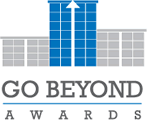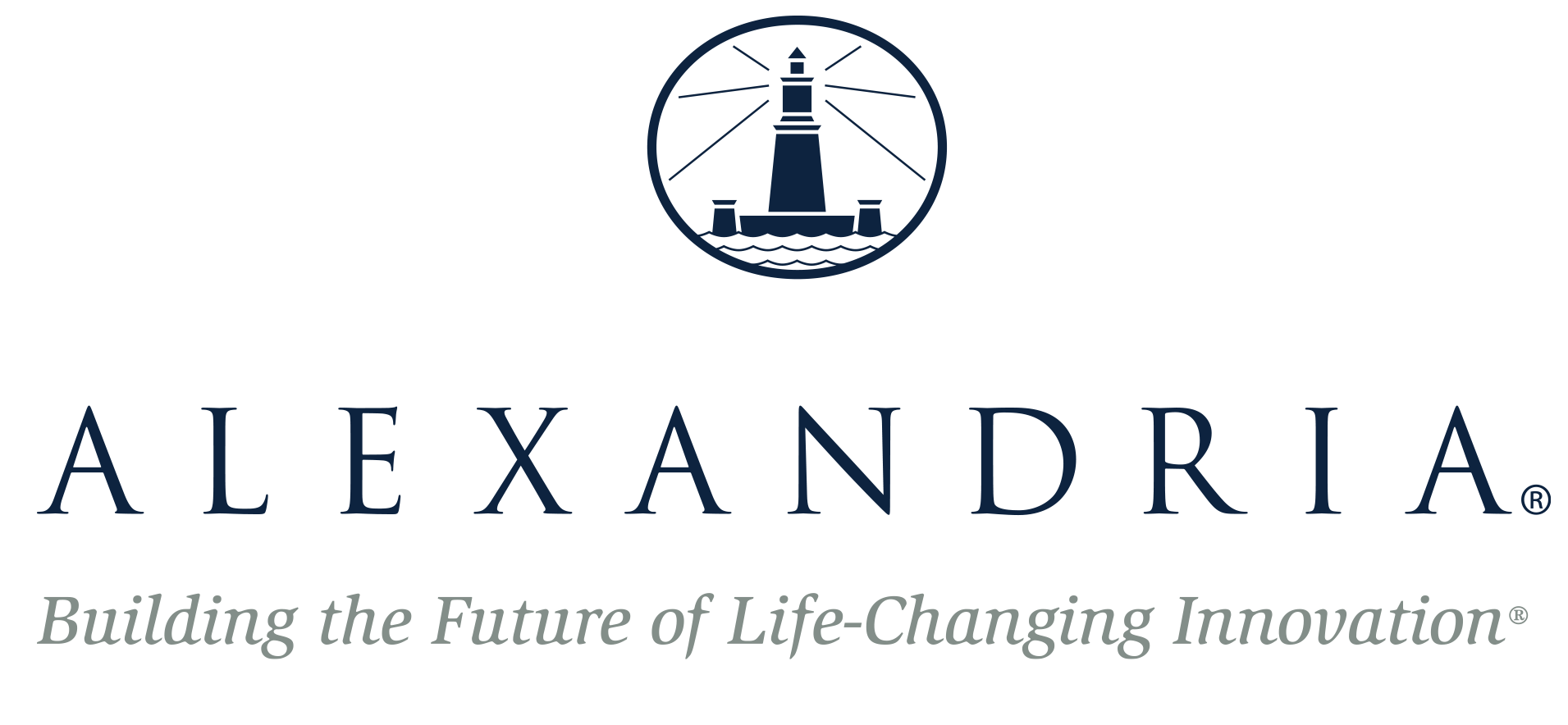
I2SL's Go Beyond Awards
Beyond Laboratories
Beyond Green
A unique awards program honoring organizations, individuals, products, and projects that are advancing sustainable, high-performance facilities.
Congratulations to the winners of
I2SL's second annual Go Beyond Awards. Awards were
presented at a luncheon ceremony at the Labs21 2009 Annual Conference
on September 24, 2009, in Indianapolis, Indiana.
Labs21 2009 Annual Conference Go Beyond Award Winners
I2SL, in partnership with R&D Magazine, is pleased to present the
winners of the second annual Go Beyond Awards. Go Beyond Award winners show their commitment to the goals of Labs21, and that excellence in sustainability means going beyond the laboratory, beyond the United States, and beyond being green when considering building projects, products, and services. The second-annual Go Beyond Awards recognized the following outstanding winners:
INDIVIDUAL AWARD WINNER
D. Randall Lacey accepts his award |
D. Randall Lacey, Cornell University
As a university engineer at Cornell University, Randy Lacey has done everything from designing to managing to operating laboratory facilities, but it is his work outside of his regular day job that makes Mr. Lacey so deserving of the 2009 Go Beyond Award for an Individual.
For years Mr. Lacey has been a staunch supporter of the Labs21 program. Mr. Lacey has presented several times at the Labs21 Annual Conference, sharing his lessons learned and experiences with the Labs21 Community on topics such as selecting and operating laboratory systems and climate neutral research campuses.
Mr. Lacey is a Labs21-registered instructor of the Labs21 Operations and Maintenance (O&M) course and helped update the course in 2008 to include information that was more relevant to the O&M community. The course was well received at the Labs21 2008 Annual Conference and continues to be offered. Mr. Lacey also participated in discussions to help transition the O&M course to a webinar format.
Mr. Lacey applies the Labs21 Approach to the various laboratory projects he works on for Cornell, which have ranged from biohazard laboratories to animal facilities to pharmaceutical facilities, and other unusual laboratory types. He also serves as a leader and advocate for Labs21 at the university.
Cornell has been involved with the Labs21 program since it began, is a Labs21 Partner, and has adopted and incorporated the Labs21 Approach across their campus.
Individual Honorable Mention
Thomas Smith accepts his award |
Thomas C. Smith, Exposure Control
Technologies, Inc.
As founder and president of Exposure Control Technologies, Inc. (ECT), Tom Smith has demonstrated a clear commitment to sustainability. He has created an organization that makes it a priority to help its customers save energy while operating safe laboratories. Today, ECT is saving millions in energy costs and cubic tons of carbon emissions through the implementation of their fully sustainable programs throughout the United States.
For years, Mr. Smith has directly supported the Labs21 mission by presenting, often more than once, at annual conferences; reviewing Labs21 Best Practice Guides and Technical Bulletins; and regularly teaching Labs21 Workshops. He was a co-developer of the O&M training course. In addition, Mr. Smith is a recognized leader in commissioning laboratory facilities and fume hoods by applying Labs21 methods and design approaches. Mr. Smith has commissioned several EPA laboratories and has successfully reduced their energy use by applying innovative techniques and methods that are based on Labs21 principles.
Mr. Smith's Labs21 Annual Conference presentations have covered topics such as laboratory ventilation systems, fume hood performance and testing, and laboratory safety. Mr. Smith was invited to expand on his fume hood presentation for publication in R&D Magazine's 2008 Laboratory Design Handbook. The expanded abstract was published by R&D Magazine in November 2007 and was also included in I2SL's E-Library.
Beginning in late 2008, Mr. Smith began working with I2SL to transfer the Labs21 O&M Workshop into a webinar format. Mr. Smith led the charge to revise the workshop by developing and including audience polls to encourage interaction and by removing excess information to reduce time needed for the session. Mr. Smith also taught the first webinar in April 2009 and provided Labs21 feedback on how to improve future sessions.
Mr. Smith's involvement on ASHRAE and American National Standards Institute (ANSI) Laboratory Ventilation Standard Z9.5-2003 committees provides Labs21 with a valuable connection to these impactful groups.
PROJECT—NEW CONSTRUCTION AWARD WINNER
Jon Jackson of Bohlin Cywinski Jackson accepts the award |
Yale University Class of 1954 Chemistry
Research Building
Yale's first LEED® Silver building, a 100,000-square-foot Chemistry Research Building, has helped the university save more than 16 billion British thermal units (Btu), 225,000 gallons of water, and more than $282,000 annually. It was more than just the goal of LEED certification that helped the building designers and engineers achieve its energy, water, and cost savings. Application of the Labs21 Environmental Performance Criteria (EPC), which focused more heavily on the special uses of the laboratory building than LEED, provided the major guidance for development of this green building.
The building provides a high quality of life and energy efficiency through open, north-facing laboratories. Tall windows light the deep, densely occupied research spaces and student write-up areas, and enhance safety by providing clearly lit hoods and benches. Smaller windows with horizontal sun shades reduce glare and summer heat gain in south-facing offices. The ventilation system conserves thermal energy by first tempering air to condition offices, subsequently reusing it in the laboratory zone, ultimately exhausting it through double-sashed, reduced volume fume hoods. A heat recovery system preconditions intake air.
Water use is reduced 68.6 percent by collecting water used to backwash the water systems to flush toilets and urinals. Process water use, including laboratory faucets, is reduced by 33 percent by a chilled water loop in lieu of once-through water for process water used in chemistry laboratory spaces. The closed-loop system minimizes use of potable water.
A 25 percent reduction in design energy costs was seen compared with the energy cost budget in ASHRAE/IESNA Standard 90.1-1999 through the tempering ventilation and heat recover system. Fume hood occupancy sensors and zone presence sensors lower the rate of ventilation air required from 12 air changes per hour (ACH) to 6 ACH in the laboratory spaces when the sensors determine that the laboratory space is unoccupied.
During construction of the facility, 72 percent of the waste accumulated was diverted from landfills, 8 percent of the materials used contained recycled content, and 51 percent of the materials were from regional sources.
The following organizations provided the backbone for the success of the Yale Chemistry Research Building:
- Bohlin Cywinski Jackson - Design Architect
- Cannon Design - Executive Architect and Structural Engineer
- Vanderweil Engineers - M/E/P Engineers
- Research Facilities Design - Laboratory Planning
- ReTec - Lighting Design
PROJECT—RENOVATION OR ADAPTIVE REUSE
Jay Jeffries accepts the Go Beyond Award |
U.S. Food and Drug Administration (FDA) Muirkirk Road Complex
The U.S. Food and Drug Administration (FDA) maintains several laboratories at its Muirkirk Road Complex in Laurel, Maryland, to conduct research programs under the Center for Food Safety and Applied Nutrition, the Center for Devices and Radiological Health and the Center for Veterinary Medicine. Laboratories at the sites are part of the Food Emergency Response Network (FERN) developed to protect the US food supply. Several laboratories are also members of the Laboratory Response Network (LRN) developed for emergency preparedness and response.
Under a Utility Energy Service Contract (UESC), Washington Gas performed a Water and Energy Investment Grade Audit for the Muirkirk Road Complex facilities including Energy Conservation Measures (ECMs). Just a few of the 21 ECMs proposed in the audit included:
- Autoclave steam condensate tempering
- Air handling unit condensate and reverse osmosis reject water reuse
- Bathroom fixture retrofits
- Chiller and plant modernization
- Vent steam heat recovery
- Direct digital control system upgrades and Phoenix Valve installation
- Variable frequency drives installation
- Steam pipe and valve insulation
- Damper replacement
- Steam trap retrofit
- Occupancy sensor installation
FDA also turned to Department of Energy's National Renewable Energy Laboratory (NREL) in reviewing Washington Gas' audit report for technical accuracy and projected cost savings as well as the cost reasonableness of its proposal to implement the ECMs.
After the ECMs were implemented, FDA began to immediately see savings, which equated to more than $1 million in the first year alone. FDA expects the simple payback on the project to be under ten years.
FDA and Washington Gas attribute the success of the implementation of these ECMs to the exceptional project management, technical expertise and exceptional collaboration between Walter Coto (FDA) and David Harrell (Washington Gas).
The FDA Team, Damon Downing and John Bassler of Washington Gas, and the Labs21 Technical Team representative, Otto Van Geet, received a 2007 Department of Health and Human Services Energy and Water Management group award for the UESC as a result of the outstanding implementation and success of the ECMs at the Muirkirk Road Complex. These awards honor champions in the Department of Health and Human Services who have made significant contributions to the energy conservation and environmental goals of the agency.
EQUIPMENT MANUFACTURER AWARD WINNER
Gordon Sharp accepts the award and shakes hands with Dan Doyle |
Aircuity, Inc.
Aircuity, Inc. manufactures building energy and environment information systems that increase building energy efficiency and reduce carbon emissions while simultaneously improving indoor environmental quality. Aircuity optimizes building ventilation with a unique multiplexed sensing technology and Web based analysis software to successfully enable demand based energy saving approaches for offices and classrooms as well as dynamic reduction of room ACH rates in laboratories and vivariums. The company aims to be the recognized leader in optimizing building ventilation for energy-efficient performance without sacrificing occupant comfort, health, or productivity.
Aircuity's adoption of the Labs21 Approach can be seen in the significant investment the organization made in an 18-month engineering and architectural design project to develop the most sustainable office and laboratory research facility fit-out project ever completed. This project, known as the Aircuity Center for Green Building Technology, likely involved the largest number of energy-efficient HVAC systems and design approaches ever used in one building. Aircuity's goal was to create a living laboratory facility to educate the industry and the public about new sustainable technologies that touched almost all facets of office and laboratory environments. A 100 drawing final design package was completed and bid, but the project was shelved after it exceeded budget; however, a white and green roof was installed, and several educational presentations were made at various conferences to share lessons learned with the industry.
Aircuity is very active with conferences including the Labs21 Annual Conference and often makes educational presentations on energy efficiency at 10 to 15 different events per year. Additionally, the organization published two articles on dynamic control of laboratory ACHs in ALN magazine. One of these articles and numerous presentations discussed a major research study Aircuity completed in January of 2009 that documented the potential energy savings and environmental conditions in about 300 laboratory rooms over 1.5 million hours of laboratory operation. These papers are also available in I2SL's E-Library. Aircuity's chairman also testified in front of Congress on climate change and energy efficiency.
Aircuity's OptiNet System provides airside energy efficiency solutions for research laboratories as well as non-laboratory facilities. OptiNet's main function is to save energy and reduce a building's carbon footprint. Aircuity also created a unique energy analysis tool that documents the amount of energy savings that the system can provide the owner. This tool also documents the environmental impacts of reducing laboratory airflows. Additionally, Aircuity uses a unique sensor swap and calibration program that refurbishes sensors and extends their life versus discarding them.
As an example, Arizona State University has indicated that a current Aircuity project at its 2006 Laboratory of the Year, Biodesign A & B laboratory will save more than $1 million in energy annually. At the University of Pennsylvania, Aircuity laboratory retrofits are the university's top energy savings initiative.
Back to Go Beyond Awards Index

